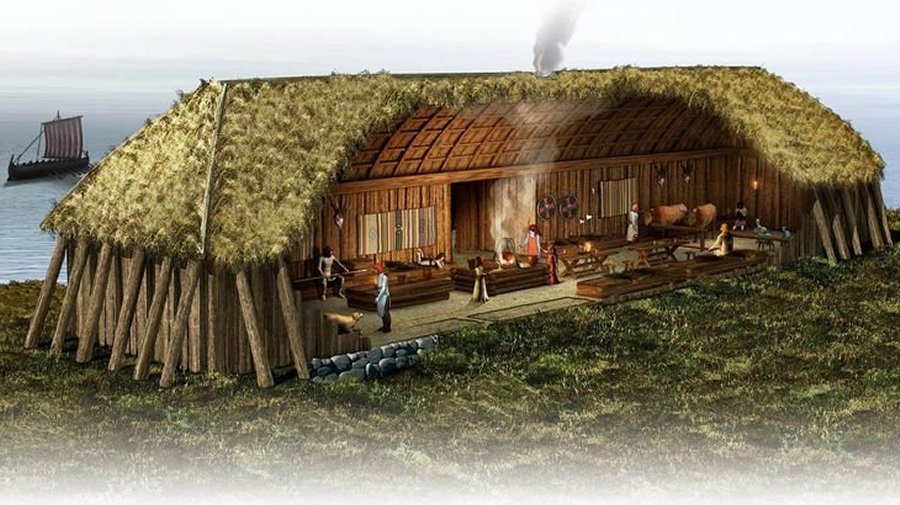Why Did the Vikings Burn Their House When Dead?
Regarding the custom of burning the dead, not only the Vikings did so, but also many other people from other regions. But one cool thing in the Viking community was that they burnt their longhouse when a person was dead. Nothing about the Viking culture was unreasonable. It was just because we don't understand it. This blog post is to help make sense the custom of burning the longhouse in the Viking days.
THE VIKINGS LIVED INSIDE THE LONGHOUSE
Langhús or the longhouse was the common place for the Vikings to live. It was 5 to 7 meters wide (16 to 23 feet). A wealthy family could own a bigger longhouse ranging from 15 to 75 meters. There were many rooms inside and the Vikings divided them with walls or set of stones.

They lit the candle inside to light up the house. But nothing of it could compare to the light we have today. To describe the life inside the longhouse at night, we have to say "dull" and "dark". The end of the longhouse would store the livestock and the slaves. The Vikings kept their slave living with the domestic animals.
BURNING THE LONGHOUSE
Archaeologists and scholars have been studying on the tradition of burning the longhouse of the Vikings.
According to a group of insightful scholars, the Viking burial mounds were somewhat similar to the house of the living. After they burnt the longhouse, one or more burial mounds would be erected on the remains of the longhouse.
When studying the longhouse in Scandinavia, Marianne Hem Eriksen, a doctor at the Department of Archaeology, Conservation and History at the University of Oslo, realized that it belonged to the traditional and ritual importance.

The human bodies rest under the thresholds of the longhouse. If it was the burial sites, the remains would be placed near the entrance. In some cases, the entrances of the burial mounds would be placed over the house's door.
THE VIKING BELIEF: HOUSE AND SOUL CONNECTED
Regarding the language, many of the Norse words relating to the house were connected with the human body. For example, the word "window" was a compound word combining the wind and eye. It referred to the openings in the walls where the wind would come inside the house. Or the word "gable" - the top of the house - means the skull.

The Viking must have seen a connection between their body and their house. The Viking longhouse borrowed features of the human body, didn't it? It is not impossible that the Vikings linked their longhouse with their body and their soul. The Viking longhouse was kind of essence to them.
It was close to the Vikings. And they wanted to give it a burial and burning. Maybe it was a way to honor and respect their own shelter which provided them protection for a long time.
The reason why the Vikings burned the body was partly that they wanted to free the soul. And interestingly, the longhouse of the Vikings had the soul or the essence.




